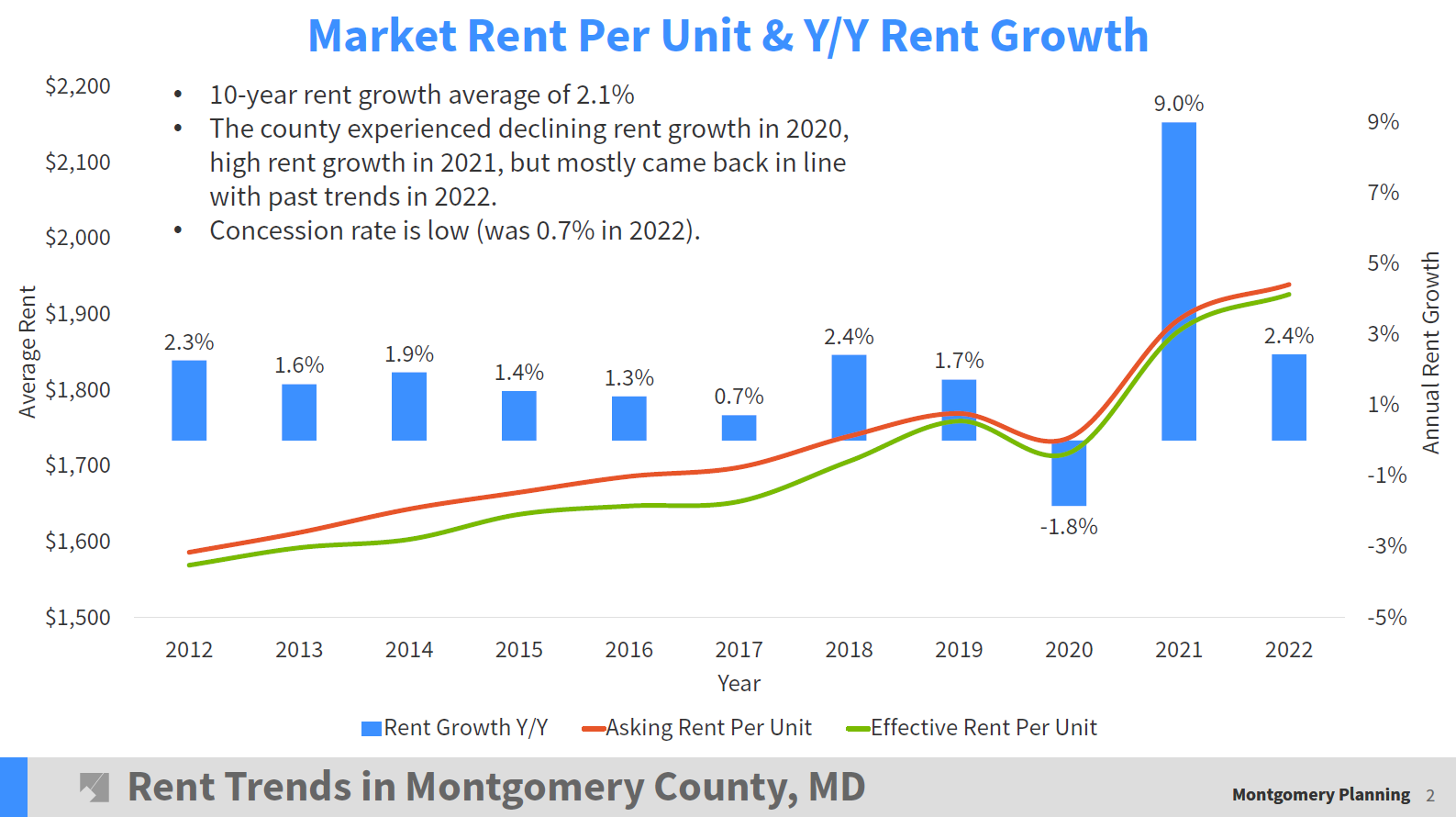By Adam Pagnucco.
With MoCo’s multifamily construction market grinding to a halt – probably due in large part to its devastating rent control law – County Executive Marc Elrich has a new policy proposal.
He wants to tighten rent control even more.
At a media briefing last week, Elrich discussed a new law allowing the Office of Consumer Protection and the county attorney to sue landlords for violations and then pivoted to the level of rent increases allowed under the county’s rent control law. Here is what he said about that.
*****
Also, in the world of renting, the council passed legislation two years ago that ties allowable rent increases to a formula, 3 percent plus the rate of inflation capped at 6 percent. Last year, we finalized the regulations on this legislation and went into effect at 6 percent due to the inflation rate being above 3 percent at the time. For fiscal 2026, the inflation rate was 2.7 percent so that means this year the allowed rent increase is going to be 5.7 percent. We put out notices of this rate drop back in March and now it’s in effect as of July 1. It’s important for all renters and landlords to be aware of this rate change.
I’ve supported rent stabilization for decades. This is not a secret. It goes back to my time on the Takoma Park City Council. But this bill did not end up where it needed to be. Along with Council Member Jawando and Mink, we initially proposed a 3 percent cap unless inflation or necessary repairs necessitated a higher rate of increase. I’ll point out 3 percent was higher than the average rent increase that was taken by landlords for more than twenty years. So it was not a cap that was below what landlords were typically taking. That was the number we believed would give tenants some predictability and protection from sharp increases while still allowing landlords to cover legitimate costs. And where we ended up was a rate cap that would be, in this case, more than twice the inflation rate. And since wages for lower paid workers rarely rise even at the inflation rate, it just continues increasing the affordability gap to get back to what one can afford and what the market rates are. So I’m hopeful that in the future, the council will revisit the rent cap to something that’s a little more closer tied to what landlords actually experience in terms of increased costs.
*****
Here’s my take.
Let’s start with a valid point by Elrich. For many years prior to the pandemic, rent increases in the county averaged 2.4% or lower. Now let’s understand that those are averages, and they presumably include lots of zeros, many 1-ish percents, many 2-ish percents and some higher increases thrown in. The principal reason for low average increases was low inflation prior to the pandemic. This demonstrates that rent control’s passage was unnecessary all along.
So what happened later? The pandemic caused huge increases in operating costs for rental buildings. At the same time, the county passed temporary rent controls and the state implemented a temporary eviction moratorium. This resulted in a zig zag in average rent increases of -1.8% in 2020, +9.0% in 2021 and +2.4% in 2022 – an average annual rent increase of 3.3% over the period. That was higher than the average of prior years but not widespread gouging as alleged by the likes of Elrich, Jawando and Mink and their taxpayer-subsidized allies in CASA and the Montgomery County Renters Alliance. Check out the chart from the planning department below.

So to the extent that there was a spike at all, it was produced by a simultaneous government clampdown on rent increases and a spike in inflation, leading to a one-year spike in rents to recover costs. This was a crisis manufactured in part by government – the same government that exploited it to pass the rent control demanded by its taxpayer-funded advocacy organizations.
Now Elrich wants to lower allowable rent increases. That’s particularly unhinged since he has recommended numerous tax increases, including a ten percent property tax hike two years ago, and he regularly recommends fee hikes, including a doubling of the solid waste fee on apartment buildings just this year. Now he suggests that allowable rent increases should be limited to 3% when he has wanted tax and fee hikes ranging from 10-100%. Who would want to own a rental building under such circumstances?
But there is a deeper meaning here. The real danger of a rent control law is not so much what it contains at any one moment, but rather what it could contain in the future. With rent control in effect, there will always be politicians like Elrich, Jawando and Mink who seek to tighten it for political gain. And depending on the composition of the county council, they could succeed. Businesses are used to economic risk, but this level of political risk is existential and uncontrollable. That’s the real reason why the national real estate industry has redlined Montgomery County and stopped building multifamily units here.
And as long as there are politicians like Elrich and his allies – and taxpayer-funded groups that egg them on – that boycott of MoCo by many real estate firms will continue.
